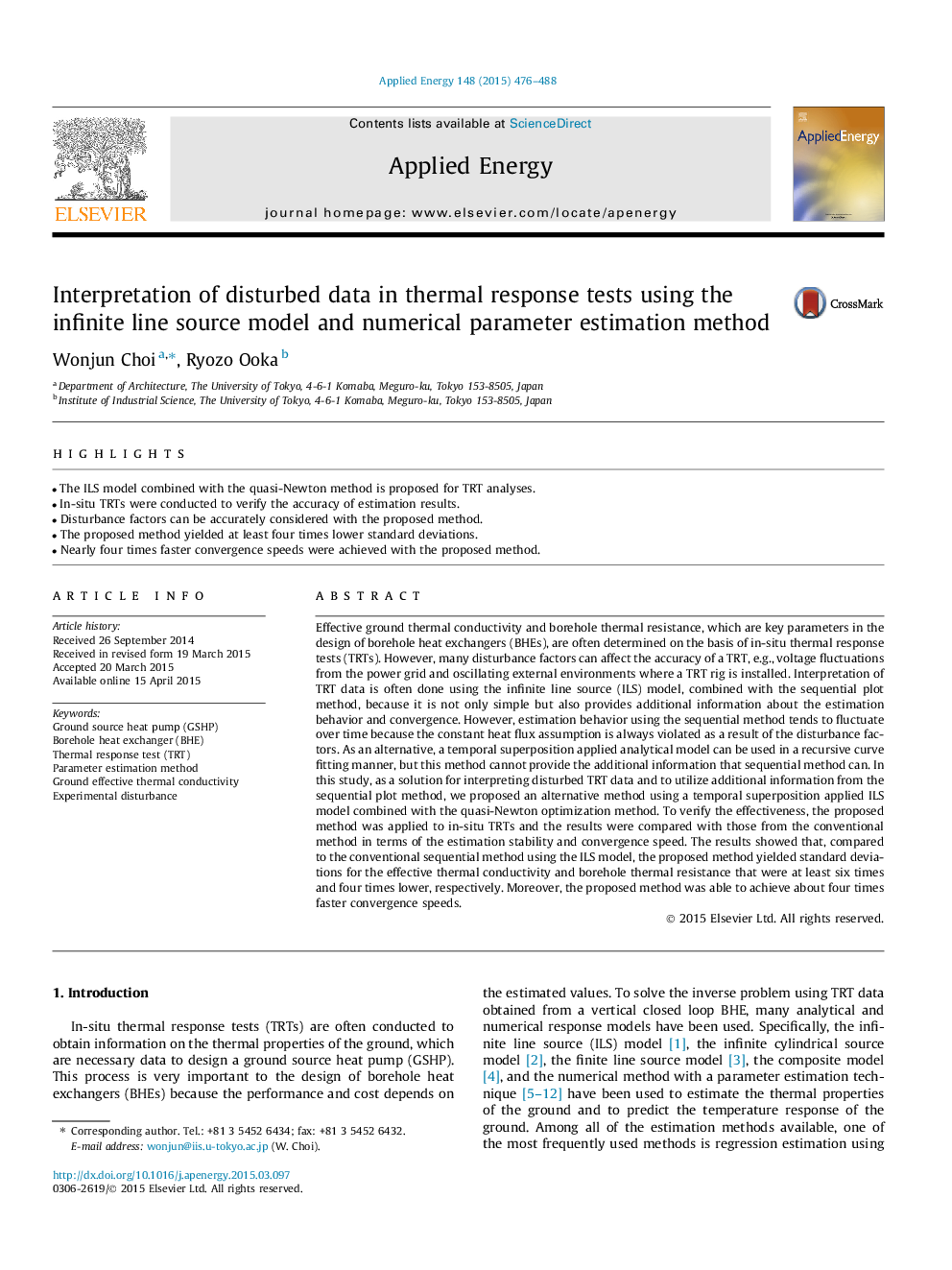| Article ID | Journal | Published Year | Pages | File Type |
|---|---|---|---|---|
| 6687344 | Applied Energy | 2015 | 13 Pages |
Abstract
Effective ground thermal conductivity and borehole thermal resistance, which are key parameters in the design of borehole heat exchangers (BHEs), are often determined on the basis of in-situ thermal response tests (TRTs). However, many disturbance factors can affect the accuracy of a TRT, e.g., voltage fluctuations from the power grid and oscillating external environments where a TRT rig is installed. Interpretation of TRT data is often done using the infinite line source (ILS) model, combined with the sequential plot method, because it is not only simple but also provides additional information about the estimation behavior and convergence. However, estimation behavior using the sequential method tends to fluctuate over time because the constant heat flux assumption is always violated as a result of the disturbance factors. As an alternative, a temporal superposition applied analytical model can be used in a recursive curve fitting manner, but this method cannot provide the additional information that sequential method can. In this study, as a solution for interpreting disturbed TRT data and to utilize additional information from the sequential plot method, we proposed an alternative method using a temporal superposition applied ILS model combined with the quasi-Newton optimization method. To verify the effectiveness, the proposed method was applied to in-situ TRTs and the results were compared with those from the conventional method in terms of the estimation stability and convergence speed. The results showed that, compared to the conventional sequential method using the ILS model, the proposed method yielded standard deviations for the effective thermal conductivity and borehole thermal resistance that were at least six times and four times lower, respectively. Moreover, the proposed method was able to achieve about four times faster convergence speeds.
Keywords
Related Topics
Physical Sciences and Engineering
Energy
Energy Engineering and Power Technology
Authors
Wonjun Choi, Ryozo Ooka,
